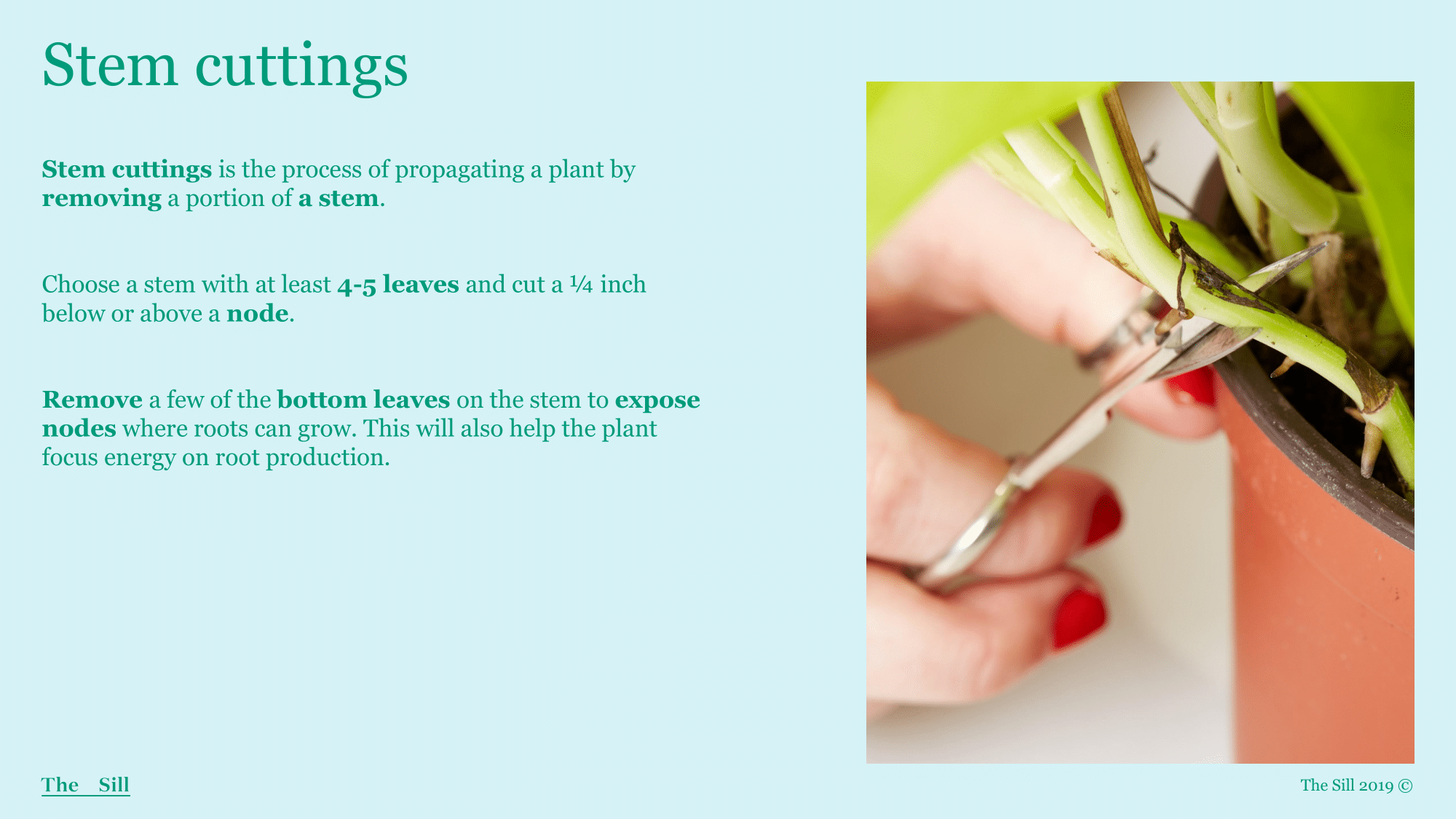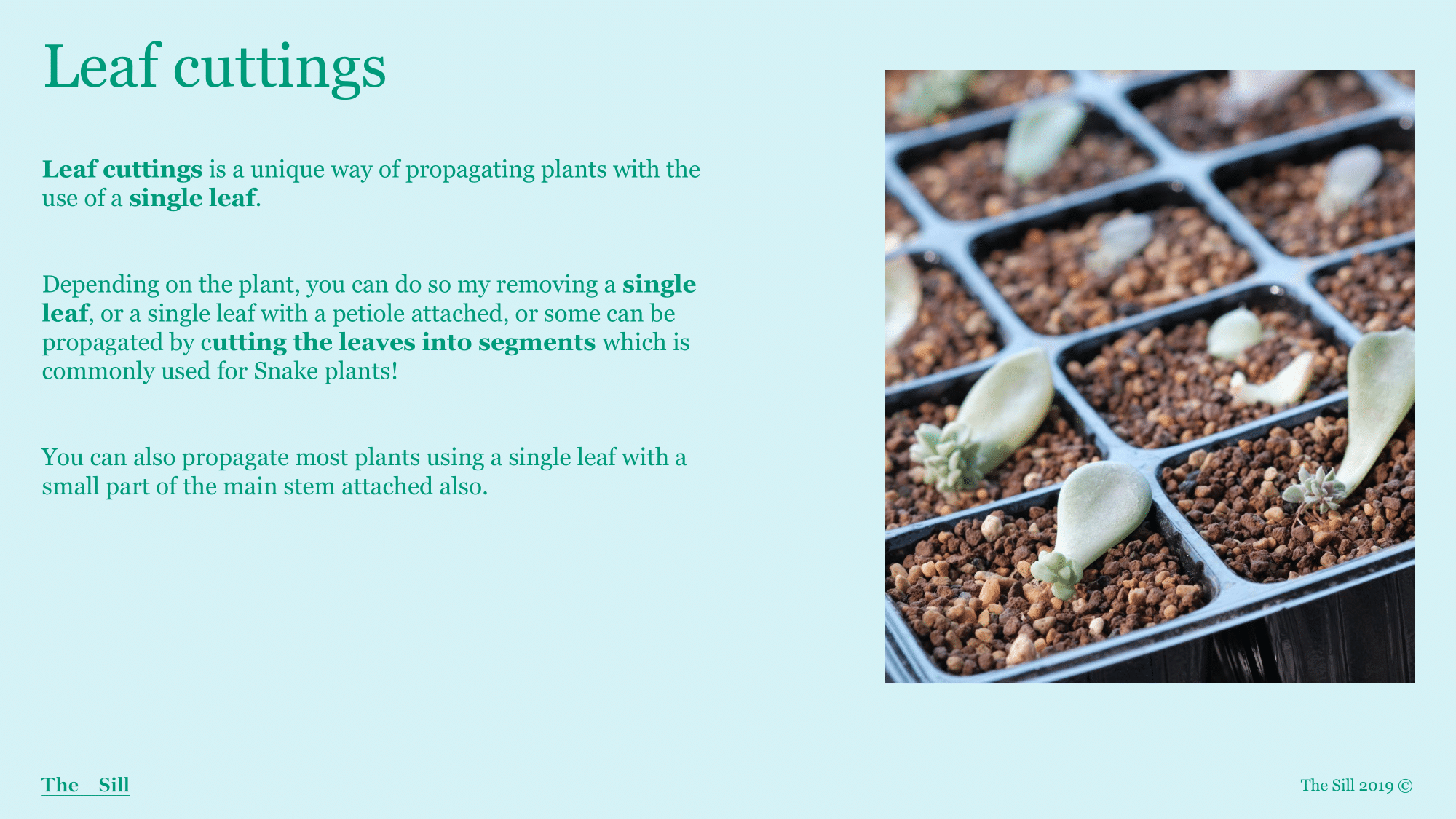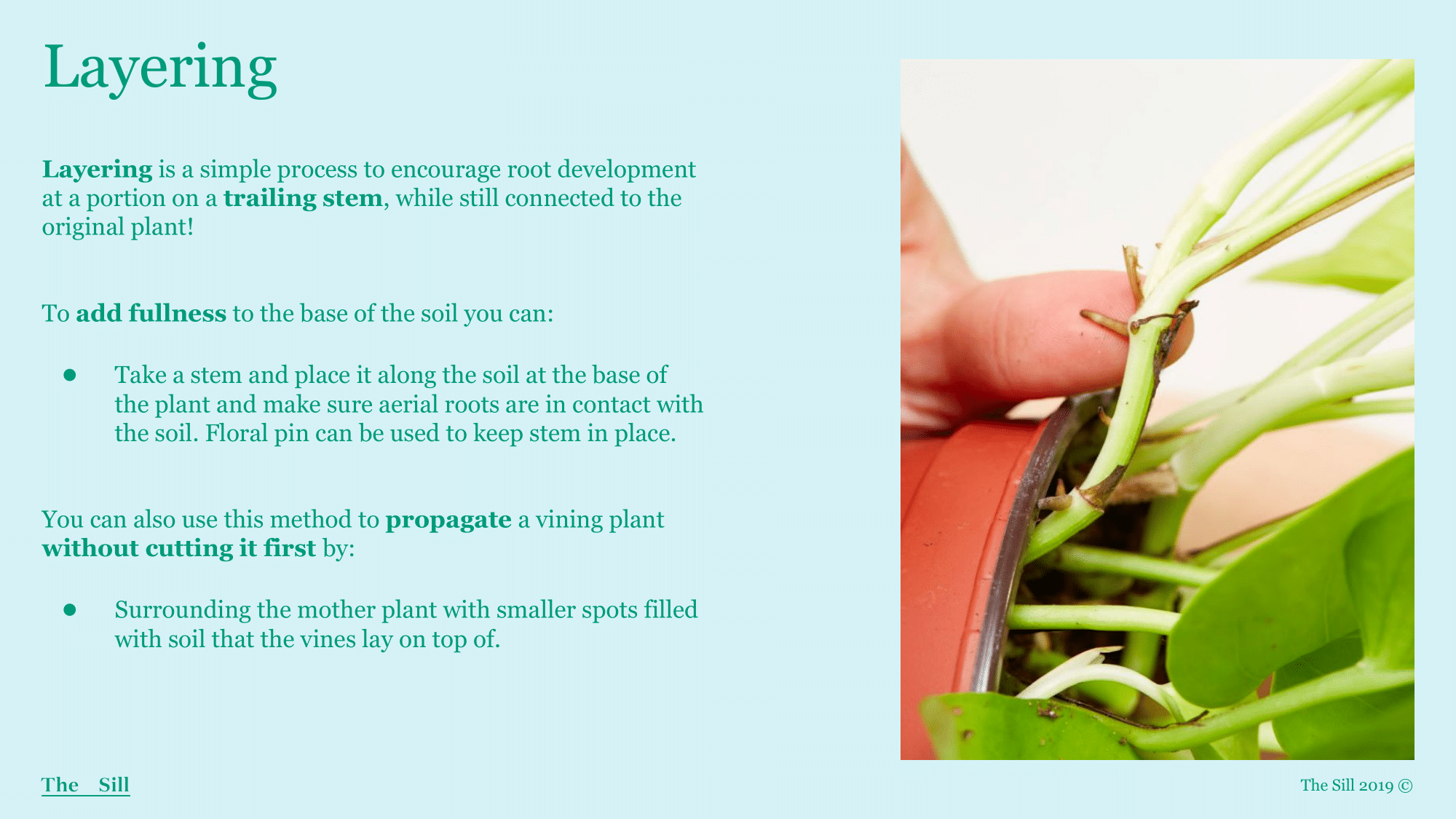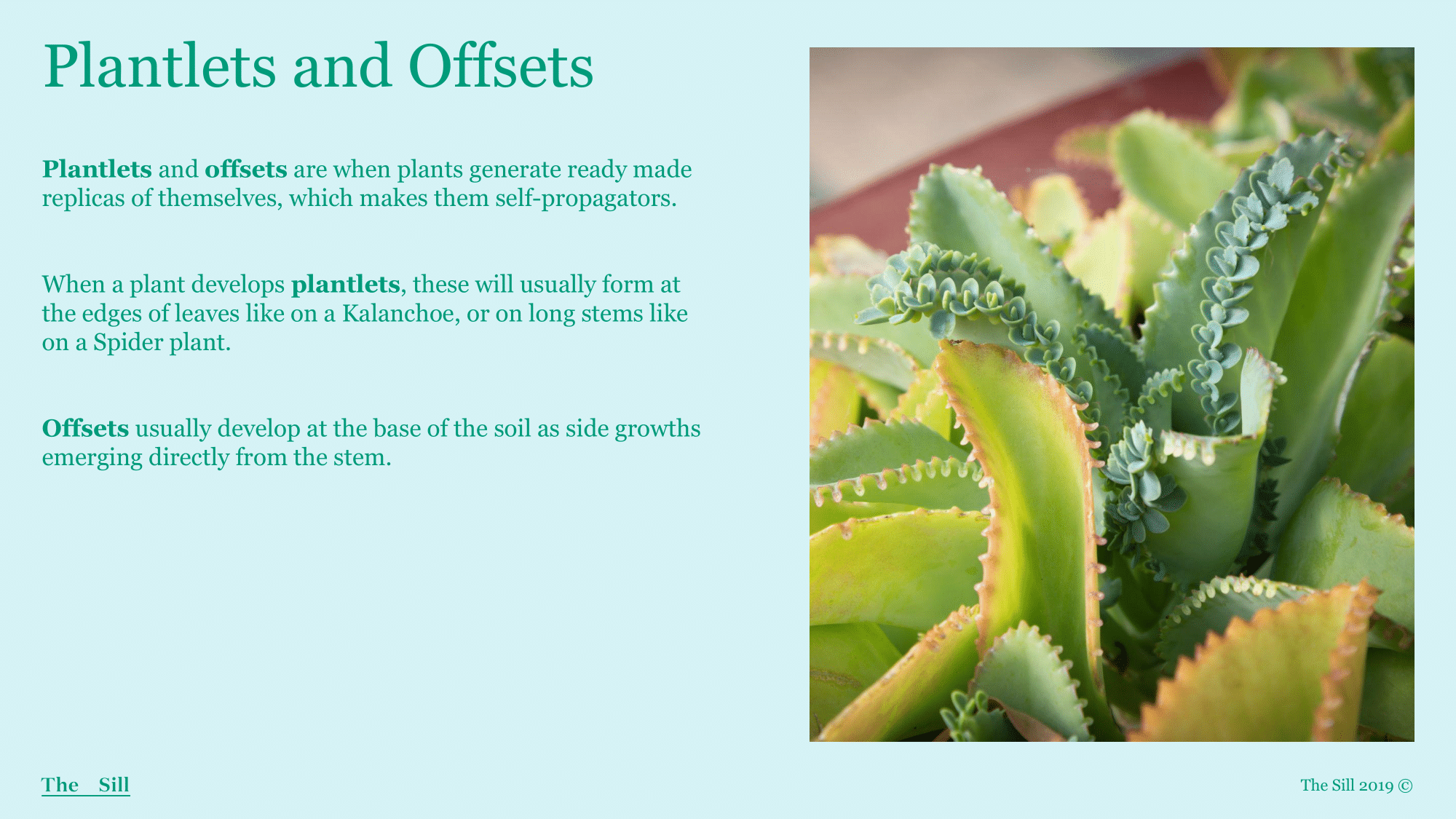Propagation Methods
Part 3 of 4

Stem Cuttings
Nodes are the point where a leaf is attached to stem or where an aerial root may be on epiphytic plants.
- After you take your stem cuttings, you can place it in a glass vessel filled with water so the bare stem/nodes are submerged in water. You don’t want the top leaves to be in water. Place in bright indirect light, and refill water when it gets low.
- Or, you can insert the cutting into a moist potting mix. Place in bright indirect light, provide higher humidity, and water when the top 2-3 inches get dry. Rooting hormone can be used if desired, but isn’t 100% necessary for cutting to take root.
Examples of plants that can be propagated using stem cuttings include Pothos, Philodendron, Monstera, Dracaena, ZZ plants, Aglaonema, Maranta, Hoyas, Schefflera, Peperomia, Pilea, etc.

Leaf Cuttings
Succulents can be easily propagated with the use of a single leaf removed from the plant, allowed to callous over for a day or more, and then placed back onto moist potting mix to start rooting/develop new growth.
You can also propagate succulents by placing plastic wrap over the opening of a glass vessel filled with water secured with a rubber band. A small hole can be poke so the end of the leaf is hovering over the water (not touching it).
Overtime you’ll see roots starting to form growing toward the water where it can then be planted into soil.
- You can remove a single leaf off a ZZ plant, or make a clean horizontal cut on a snake plant leaf, let them callous for a day, and then place the cut end into water (not the entire leaf).
Examples of plants that can be propagated with just a leaf include most succulents like Echeveria, Hoyas, Sedum, Sempervivum, as well as Snake plants, ZZ plants, African violets, Begonia rex, Kalanchoe, etc.
Other plants like Ficus or Monstera can be propagated with a single leaf as long as you have a part of the main stem attached that will contain meristematic tissue which helps new growth develop. Otherwise, if you just use a leaf without a part of the stem for these plants roots may grow but no new growth.

Layering
Layering is a great method to help rejuvenate vining plants that have become bare at the base of the soil to add more fullness at the top. It’s also a fool proof way to propagate a plant to develop roots before actually cutting it from the main plant.
- Layering to add fullness: take a vine from your plant and encircle it at the base of the soil where the aerial roots can be in contact with the soil. You can use floral pins or even a stretched out bobby pin to keep the stem in contact with the soil. With proper care and patience, overtime those aerial roots should further develop and anchor the stem into the soil to add fullness.
- Layering before cutting: before cutting a plant to propagate with this method, you can surround the mother plant with smaller pots filled with soil, and have the trailing stems be in contact with the soil in the smaller pots below. Overtime, the vines should root themselves into the potting mix where you can then cut the vines from the main plant and then treat as an adult plant. The soil can be pre-moistened prior, but you shouldn’t have to re-water until roots start to develop.
Examples of plants that can be layered include any vining plants that develop aerial roots along the stems like Pothos, Philodendron, vining Monstera. String of Hearts is also commonly propagated using the layering method(Ceropegia woodii). Any plants that are also known as creepers/crawlers like Maranta can be layered and they will grow roots into the soil along the stem.

Root Division
Root division is primarily done at the time of repotting an established plant. When separating, it’ll be best to keep the plants into a similar size or smaller container depending on how large the clumps are, rather than upgrading them into a container that was larger than the diameter of the initial container when they were all grouped together.
- There are, however a few plants that can only be propagated using this method. Examples include Peace Lilies, Calatheas, Ctenanthe, Stromanthe, and some ferns. However, mostly any plant that is large enough can be separated into several self-supporting plants if they can be easily separated by clumps they’ve created in the soil.
- The kind of plants that don’t take well to being separated include all Palms, and even Bird of Paradise as they don’t particularly liked their roots being disturbed.

Plantlets & Offsets
Offsets usually have roots that have formed already beneath the soil. Therefore, you can either let these offsets grow with the mother plant, or remove them by root dividing at the time of repotting and plant them separately.
- Examples of plants that develop offsets at the soil include Aloe vera, Haworthia, Bromeliads, Orchids.
Plantlets may have roots that have already formed if you leave them with the mother plant long enough. If already rooted, you can cut the plant from the mother plant and plant it in potting mix and treat as an adult plant.
- Examples of plants that develop plantlets include Kalanchoe “mother of thousands”, Spider plants, Strawberry begonia, Opuntia cacti.
